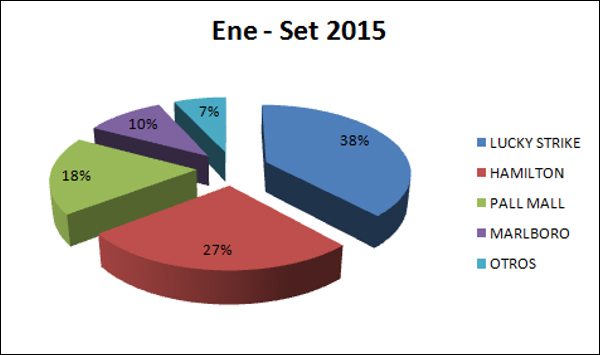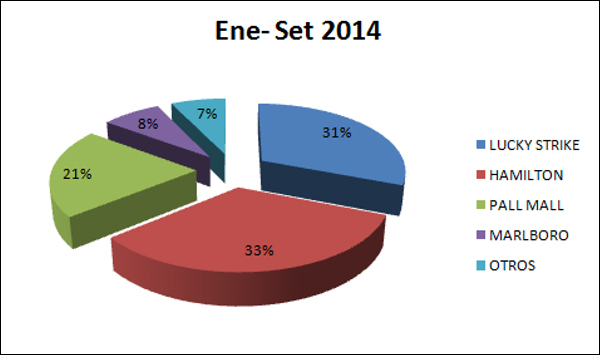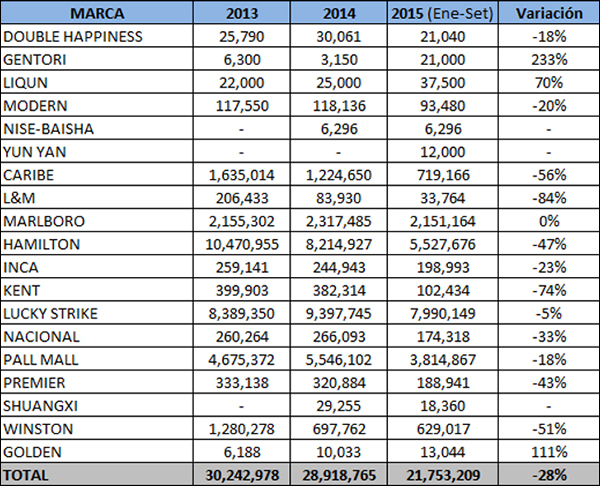Foreign Ashes: Importing Tobacco in Peru
Published on 13 November 2015
Being a product highly harmful to health and one of the most regulated in terms of sales and advertising, the presence of tobacco in our market is still important. Present in each service station, warehouses and supermarkets, the "puchos" are part of our daily life. Next, we analyze some interesting trends extrapolated from the data provided by Veritrade:
What is the favorite brand of the Peruvian?

Apparently, the cake is tilted for Lucky Strike. The funny thing is that this is a front that took only this year. If we see the same chart for 2014, we will see that the leader was Hamilton.

We see that "high end" brands such as Lucky Strike and Marlboro, took what was lost by cheaper brands such as Pall Mall or Hamilton.
How has the import of tobacco changed in recent years?
The sale of cigarettes is increasingly regulated. Even in the traditional channel, loose cigarettes are no longer sold and their means of advertising are getting smaller. The awareness campaigns on tobacco damage seek to discourage future generations from taking the habit. How is all this reflected in the amount imported this year compared to two years ago? Let's see what Veritrade tells us:

As we can see, the general trend is a fall in tobacco imports. In total, the importation of tobacco fell 28% in just two years. The "high end" brands such as Marlboro and Lucky Strike suffered a less severe blow than cheaper brands, such as Hamilton, Caribe and Pall Mall. The only brands to see some type of percentage growth are new brands, but in a total amount they do not They represent important figures.
What is the worldwide trend?
In the rest of the world the result is similar. Since 2006, tobacco sales have decreased between 3 and 4 percent per year. However, the Office of Taxes for Alcohol and Tobacco says that (for the first time since 2006) the first half of 2015 saw an increase for the US with respect to the previous year. Interestingly, this rise is attributed to the fall in oil prices. Thanks to what it saves on fuel, the average American smoker (who also earns less than the average of his non-smoking compatriots) has more money to buy cigarettes. This product is also purchased more frequently at service stations where said savings are given. Interesting to see how everything is related!